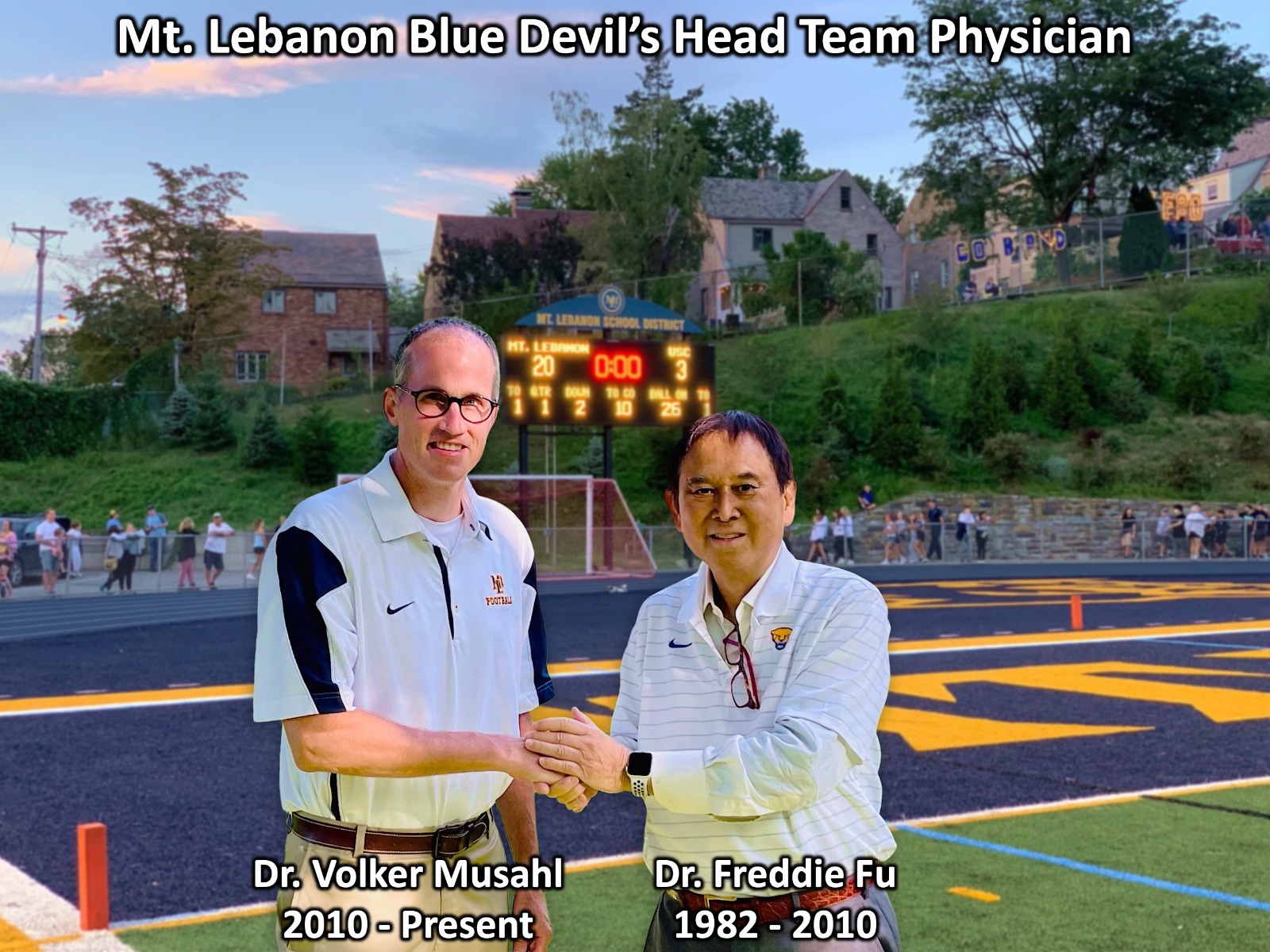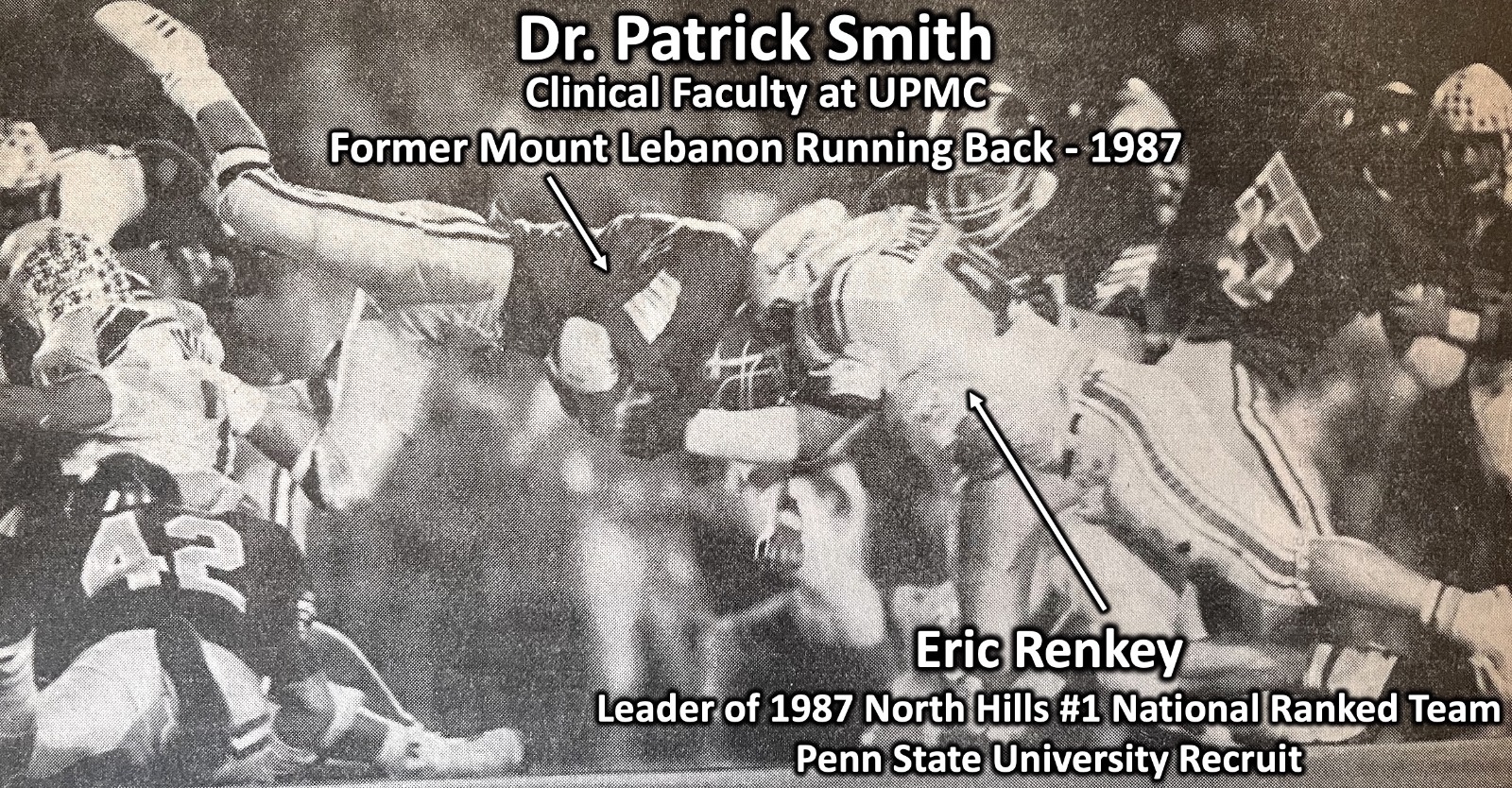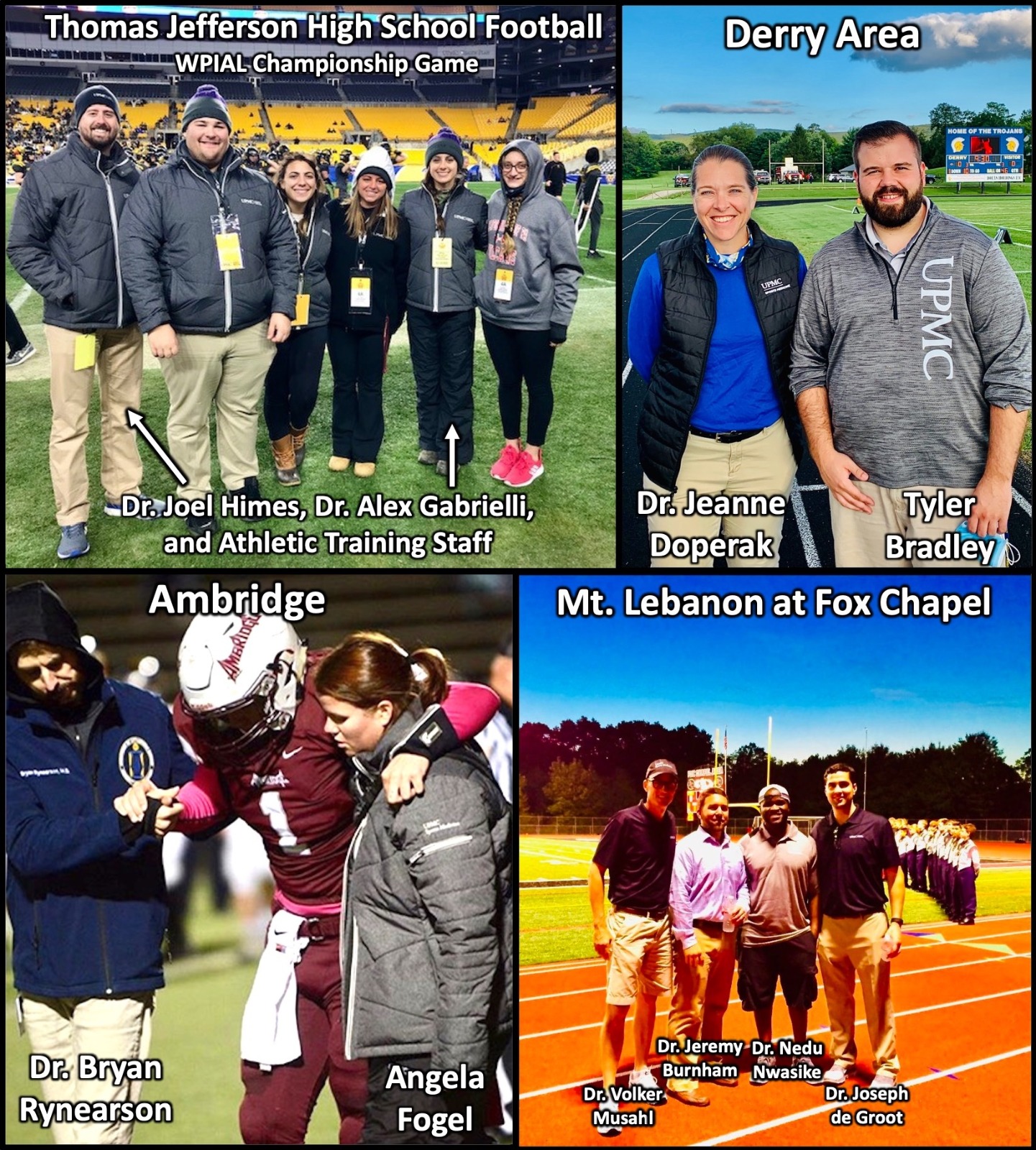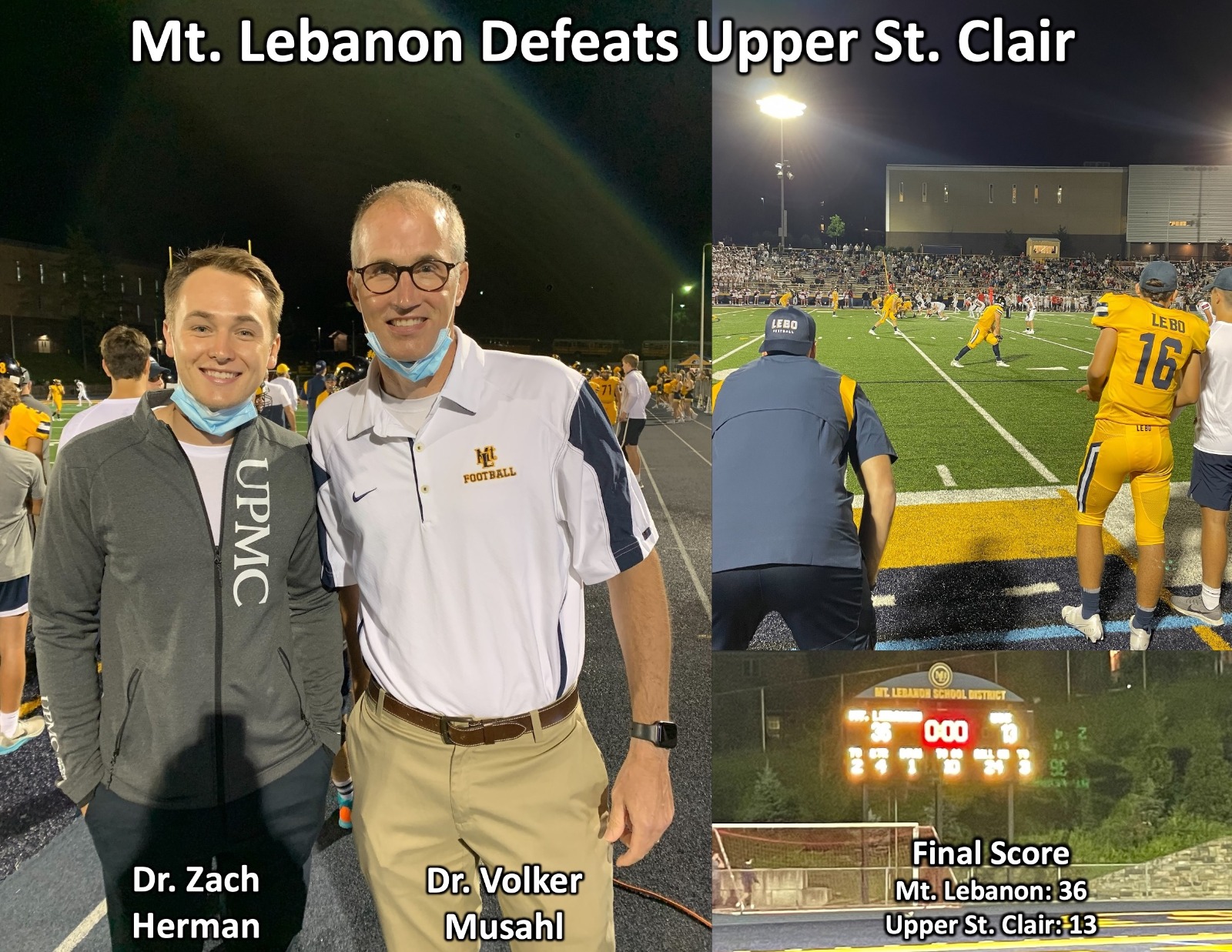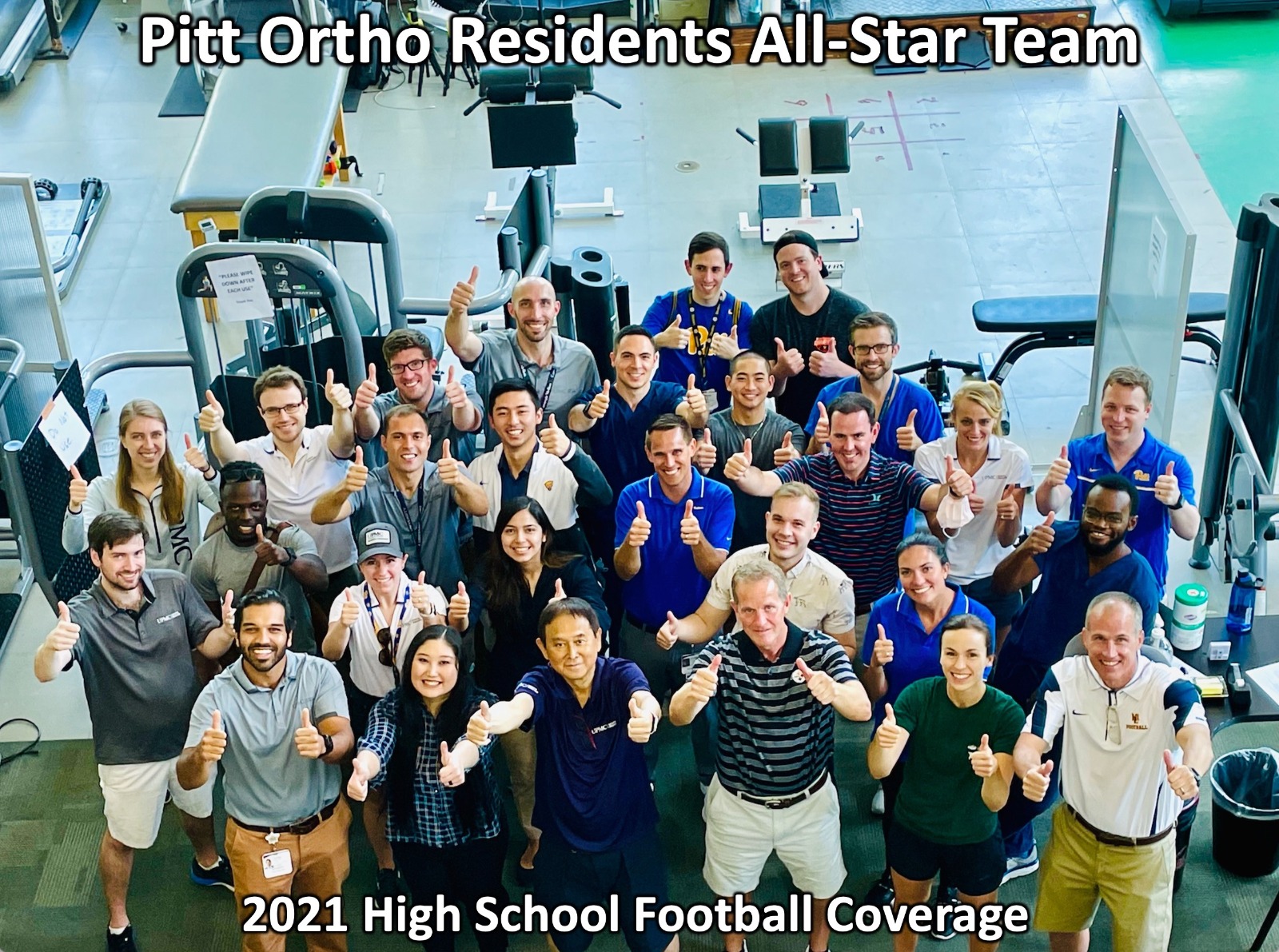During the 1970’s Dr. Pierce Scranton was asked by his neighbor, the superintendent of Keystone Oaks High School, to provide medical care for their football team. This would be the beginning of a longstanding relationship between UPMC Sports Medicine and high school football. Years later, Dr. Scranton asked one of the orthopaedic residents, Dr. Freddie Fu, to help care for these young athletes. In 1982, Mount Lebanon High School contacted Chairman Dr. Albert Ferguson, requesting a physician to be their football team doctor. Dr. Ferguson embraced this opportunity and urged Dr. Fu to take the opportunity. In fact, during the first game on the sidelines, a player suffered a violent injury, fracturing his femur. With scarce medical resources, Dr. Fu had to hold the young man’s leg in alignment for 30 minutes while waiting for an ambulance to arrive.
The lack of adequate resources at that time illustrated the need for improvement in the medical care for high school football athletes. The first step was to implement having emergency medical personnel with an ambulance on site for every game. This was followed by organizing the first high school athletic trainer program in western Pennsylvania, ensuring healthcare providers would be present for all high school football games. Importantly, the discrepancy between economically privileged suburban districts and inner-city school had to be addressed. To level this playing field, UPMC joined forces with former Pittsburgh Steeler Andy Russel’s charitable foundation, which provided funding for five years, and Pittsburgh Public Schools Director of Athletics, George Cupples, who played a key role in coordinating coverage. Through these efforts, inner-city high schools have had athletic trainers at each football game for over 30 years. High School football coverage has grown to involve most of the department of orthopaedic surgery and athletic trainers, and is not limited to musculoskeletal care, as UPMC became the first to do concussion IMPACT testing for high school athletes.
Over the decades, UPMC Sports Medicine has expanded its coverage of high school football, providing sideline care and treating a variety of injuries. UPMC physicians and trainers have experienced the rich history of many high schools in western Pennsylvania and enjoyed the blue-collar mentality of the area. New Castle, home of Zambelli fireworks, was the first high school to build a stadium with lights for night games along with live fireworks displays. Woodland hills formed from a merger of 5 other schools, where students from areas much different demographically, came together to form a team – similar to the social and racial dynamics underlying the movie Remember the Titans. Among the high schools covered, many featured future NFL stars including Taylor Allderdice (Curtis Martin), Aliquippa (Darrelle Revis), Clairton (Tyler Boyd), Penn Hills (Aaron Donald, Bill Fralic), and Woodland hills (Jason Taylor, Steve Breaston, Rob Gronkowski). Moreover, most high schools had alumni who were NFL legends, including St. Justin’s (Johnny Unitas), East Liverpool (Lou Holtz), Mount Lebanon (John Frank), Uniontown (Chuck Muncie), Fort Cherry (Marty Schottenheimer), Ringgold (Joe Montana), Hopewell (Tony Dorsett), Aliquippa (Mike Ditka), East Brady (Jim Kelly), and Central Catholic (Dan Marino). Unsurprisingly, the UPMC team met high school players that would join them in the future as orthopaedic residents and clinical faculty such as Mount Lebanon alumni Patrick Smith and Edward McClain Jr., as well as Greensburg Central Catholic Alumnus Mike McClincy. Paul Failla, son of former UPMC orthopaedic resident and Pittsburgh Pirates team doctor Jack Failla, played at North Allegheny High School and went on to both start at quarterback and play baseball at Notre Dame.
Today, UPMC Sports Medicine supervises coverage of over 50 high school football teams and provides on-site, sideline care for every football game at 17 high schools. The team of providers includes the departments of orthopaedic surgery, physical medicine and rehabilitation, and physical therapy. UPMC has provided high-quality comprehensive care ranging from injury prevention, to acute care, to rehabilitation. This has not only improved the health and safety of surrounding communities but has become an integral part of UPMC residents’ sports medicine training. Beyond sports medicine, the relationship between UPMC and high school football has allowed generations of healthcare providers to learn about and experience fascinating blue-collar communities throughout western Pennsylvania.
